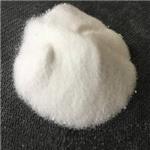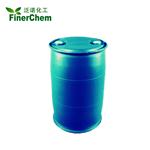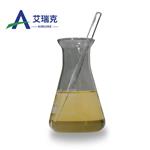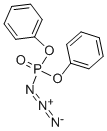What is Diphenylphosphoryl azide?
Apr 19,2021
Identification
Product Name: Diphenylphosphoryl azide
Synonyms: phosphorazidicacid,diphenylester;(PHO)2PO-N3;PHOSPHORIC ACID DIPHENYL ESTER AZIDE;PS-DPPA;Diphenylphosphorazindate(DPPA);Diphenylphosphonicazide,97%;DPPA polymer-bound, PS-DPPA;DPPA, Phosphoric acid diphenyl ester azide
CAS: 26386-88-9
MF: C12H10N3O3P
MW: 275.2
EINECS: 247-644-0
Properties
Boiling point 157 °C0.17 mm Hg(lit.)
Density 1.277 g/mL at 25 °C(lit.)
Refractive index n20/D 1.551(lit.)
Fp >230 °F
Storage temp. 2-8°C
Form Liquid
Specific Gravity 1.277
Color slightly yellow
Water Solubility insoluble
Application
Diphenylphosphonic azide acts as a reagent for the synthesis of peptides and phosphoramidates by reacting with amines. It is also used in the preparation of oligosaccharides linked with carbamate and urea bonds utilizing modified Curtis rearrangement. It is involved in pseudohalogen replacement of the azido group by treatment with nucleophilic reagents, such as water, butanol, ammonia, and various amines. Further, it is used as a hydroazidation catalyst for preparation of organoazides.
Diphenyl phosphoryl azide is used in the aziridination of olefins catalyzed by colbalt-tetraphenylporphyrin. It is also used as the activating agent in the preparation of macrocyclic lactams and of an aldose reductase inhibitor.
Instances
Phosphoryl Azide for Nosylation via Azidation

Phosphoryl Azide for Azidations

Condensing Agent

Experimental procedure): To an ice-cooled mixture containing 1 (2.5 mmol) and 2 (2.5 mmol) in dry DMF (15 mL), DPPA (3.0 mmol) is slowly added, followed by drop-wise addition of Et3N (6.3 mmol). The reaction mixture is kept at 0 °C for another 2 h, and then allowed to warm up to room temperature. After 24 h, the reaction mixture is diluted with EtOAc (80 mL) and washed with an aqueous solution of citric acid (10%, 50 mL), H2O (50 mL), saturated aqueous NaHCO3 (50 mL), H2O (50 mL), and brine (50 mL). The organic phase is dried over Na2SO4, filtered and evaporated under reduced pressure. The resulting residue is purified by column chromatography to afford 3 (83% yield).
- Related articles
- Related Qustion
- A widely used coupling agent: Diphenylphosphoryl azide Dec 1, 2023
Diphenylphosphoryl azide is a well-known azide reagent used in peptide couplings, Curtius rearrangements, and Mitsunobu inversions
- The performance of diphenylphosphoryl azide Jan 28, 2022
Diphenylphosphoryl azide, originally developed by Yamada in 1972, has shown significant synthetic versatility, being used in isocyanate synthesis.
tert-butyl alcohol, (CH3)3COH, also known as tert-Butanol, is a white crystalline solid or colorless liquid (above 77 °F) with a camphor-like odor. It is soluble in water and miscible with alcohol, ether, and other organic solvents.....
Apr 19,2021Organic ChemistryDiphenylphosphoryl azide
26386-88-9You may like
Diphenylphosphoryl azide manufacturers
- Diphenylphosphoryl azide
-

- $30.00 / 1kg
- 2024-04-28
- CAS:26386-88-9
- Min. Order: 1kg
- Purity: 98%
- Supply Ability: 2000kg
- Diphenylphosphoryl azide
-

- $2.00 / 200KG
- 2024-04-28
- CAS:26386-88-9
- Min. Order: 1KG
- Purity: 99%
- Supply Ability: 500mt/year
- Diphenyl Azidophosphate (DPPA)
-

- $0.00 / 1Kg
- 2024-04-08
- CAS:26386-88-9
- Min. Order: 1Kg
- Purity: 99.9%
- Supply Ability: 200tons




